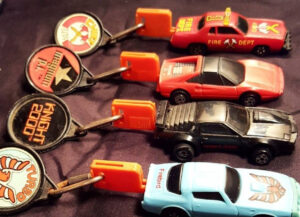The 2025 Miami Grand Prix wasn’t just another high-octane weekend on the Formula 1 calendar. It marked a radical reimagining of the sport’s pre-race traditions—one that stunned fans, challenged engineering norms, and reignited the intersection of design, play, and spectacle. For the first time in F1 history, drivers rolled onto the grid in life-sized, drivable LEGO replicas of their own team cars. It was bold. It was bizarre. It was brilliant.
Forget flatbeds and waving from slow-moving trucks. This year, the drivers’ parade was a moving installation of fanfare and engineering audacity, blending the sophisticated identity of modern F1 machines with the blocky charm of LEGO. It wasn’t just a gimmick—it was a feat. And the world was watching.
Engineering on an Unprecedented Scale
At first glance, the LEGO F1 cars might seem like novelties—oversized toys made for a bit of fun. But peel back the layers (literally), and you’re looking at some of the most complex LEGO builds ever attempted. Each car required about 400,000 individual bricks, weighed roughly 1,000kg, and was constructed over a meticulous 22,000-hour process.
That work was carried out by a 26-person expert team at LEGO’s factory in Kladno, Czech Republic. The facility has previously been responsible for massive promotional builds—life-size X-Wings, Bugattis, and superheroes—but the F1 project demanded something more. These cars had to do more than just look good. They had to move.
Built on reinforced metal chassis and powered by custom electric drivetrains, each LEGO F1 replica was more than a static sculpture. They could reach up to 20 km/h, comfortably seat two team drivers, and—most impressively—retain the distinct livery and styling cues of each F1 team. Mercedes got their silver star. Ferrari gleamed in brick red. McLaren’s papaya orange popped like citrus in the Miami sun. Every detail, from front wings to halo structures, was modeled in scale LEGO.
It was, as one engineer put it, “a masterclass in collaborative imagination.”
From Toy to Tech: Why This Mattered
F1 has always been a battleground for innovation. New aero packages, hybrid power units, tire strategies—all form part of a never-ending push for technical advantage. But innovation doesn’t just happen on the track. It happens in how the sport presents itself, connects with fans, and tells its story.
The LEGO parade was more than spectacle—it was strategic. It sent a message: F1 is open to reinvention. That’s vital for a sport increasingly aware of its need to attract younger audiences and embed itself in culture beyond the paddock.
By collaborating with LEGO—an internationally beloved brand that straddles generations—Formula 1 executed a cross-generational outreach maneuver with precision. Kids saw magic. Adults saw ingenuity. Engineers saw a challenge overcome.
The decision to hold this showcase in Miami, a race already known for its glitz, glamour, and American showmanship, wasn’t incidental. This was the perfect stage for maximum cultural impact. As drivers cruised around the circuit in their customized LEGO rides, social media erupted. Memes were minted. Short-form videos spread like wildfire. Engagement rates skyrocketed. What might have taken months of PR spend to achieve was captured in a few unforgettable minutes of pure visual gold.
Behind the Bricks: Building a Driveable LEGO F1 Car
So how does one even begin to make a LEGO car that moves?
The process began with detailed 3D modeling of each F1 vehicle. LEGO’s team used proprietary software to render how standard LEGO bricks could be used to replicate complex aerodynamic shapes like front wings, side pods, and diffusers. Each design had to walk a fine line between aesthetic fidelity and structural integrity—what looked like an F1 car still had to stay intact while moving over tarmac.
To make them driveable, the core of each LEGO car housed a steel skeleton and an electric drivetrain. Engineers created a custom steering mechanism compatible with the LEGO cockpit. The outer shell was then painstakingly built brick by brick around these systems.
The real headache? Weight. LEGO bricks aren’t light, and F1 teams aren’t used to dealing with such sluggish machines. At 1,000kg per car, it was a logistical and technical challenge to ensure the electric motors could handle the load, particularly while ensuring safety and visibility for the drivers.
Once complete, the vehicles were shipped to Miami under intense care—each part crated and documented like fine art.
Drivers’ Reactions: Amused, Impressed, Inspired
F1 drivers are used to billion-dollar machines, but this was something else entirely. While a few approached the LEGO cars with wary curiosity, most quickly embraced the whimsy.
“I didn’t think I’d ever be driving a LEGO car at a Grand Prix,” joked Lewis Hamilton. “But I have to say, it’s pretty damn cool. Hats off to the builders.”
Lando Norris, known for his gaming and meme culture savvy, leaned fully into the vibe. “This is the most fun I’ve had before a race since… ever,” he laughed in a pre-race interview, snapping selfies inside the McLaren LEGOmobile.
Ferrari’s Charles Leclerc said the project was “a reminder that this sport can still surprise you.”
The moment even managed to bridge the generational divide in the paddock. Veterans and rookies alike rode side by side in vehicles that seemed to defy every expectation about what an F1 car could or should be.
Cultural Crossover and Brand Synergy
What really set this event apart was the branding synergy. LEGO is more than a toy—it’s a cultural touchstone. Formula 1 is more than a sport—it’s a global brand machine. Together, they created a pop-cultural moment that touched everything from marketing to education.
LEGO capitalized on the event by releasing limited edition buildable miniatures of each team’s LEGO F1 car, along with custom driver minifigs. The kits sold out within hours, and a secondary market emerged almost overnight. Scalpers and collectors scrambled.
Schools and STEM programs picked up on the collaboration too. LEGO Education promoted the project as a case study in creativity and engineering, inspiring a new wave of young builders who now associate F1 not just with speed, but with ingenuity.
Criticism, Questions, and The Line Between Show and Sport
Of course, not everyone was sold.
Some F1 purists bristled. “This isn’t racing, it’s marketing,” one fan tweeted. Others questioned whether the parade had become too much of a sideshow—more Super Bowl than sport.
That’s a fair concern. F1’s popularity is soaring, but the temptation to prioritize spectacle over substance looms large. This LEGO initiative, however, struck a delicate balance. It didn’t replace a sporting event—it added a layer of play that didn’t interfere with performance or integrity. If anything, it elevated anticipation for the main race.
And let’s be honest: if a kid watches a LEGO F1 car and decides to become an engineer, or a driver, or a fan—that’s a win.
A New Standard for the Pre-Race Parade?
What happens next? That’s the question echoing through F1 circles. Does every Grand Prix now get its own twist on the drivers’ parade? Will we see similar innovations at Silverstone, Suzuka, or Monaco?
Probably not at the same scale. The Miami event was a perfect storm of opportunity, branding, and location. But the bar has been raised. Traditional truck rides might feel underwhelming from now on, and teams could begin lobbying for more input into parade experiences.
This event also proved something important to the F1 establishment: the sport can be playful without being frivolous. It can innovate outside the car as much as inside it.
Final Lap: Why It Mattered
The 2025 Miami Grand Prix LEGO drivers’ parade wasn’t just a quirky footnote in the annals of F1 history—it was a masterclass in modern sports storytelling. It brought together engineering, design, nostalgia, branding, and cultural imagination in a way no race event has before.
In a sport obsessed with milliseconds and margins, this was a moment to pause, play, and remember what drew many of us in to begin with—the joy of seeing something impossible made real.
Bricks on asphalt. Smiles in helmets. A parade we won’t forget.
No comments yet.









